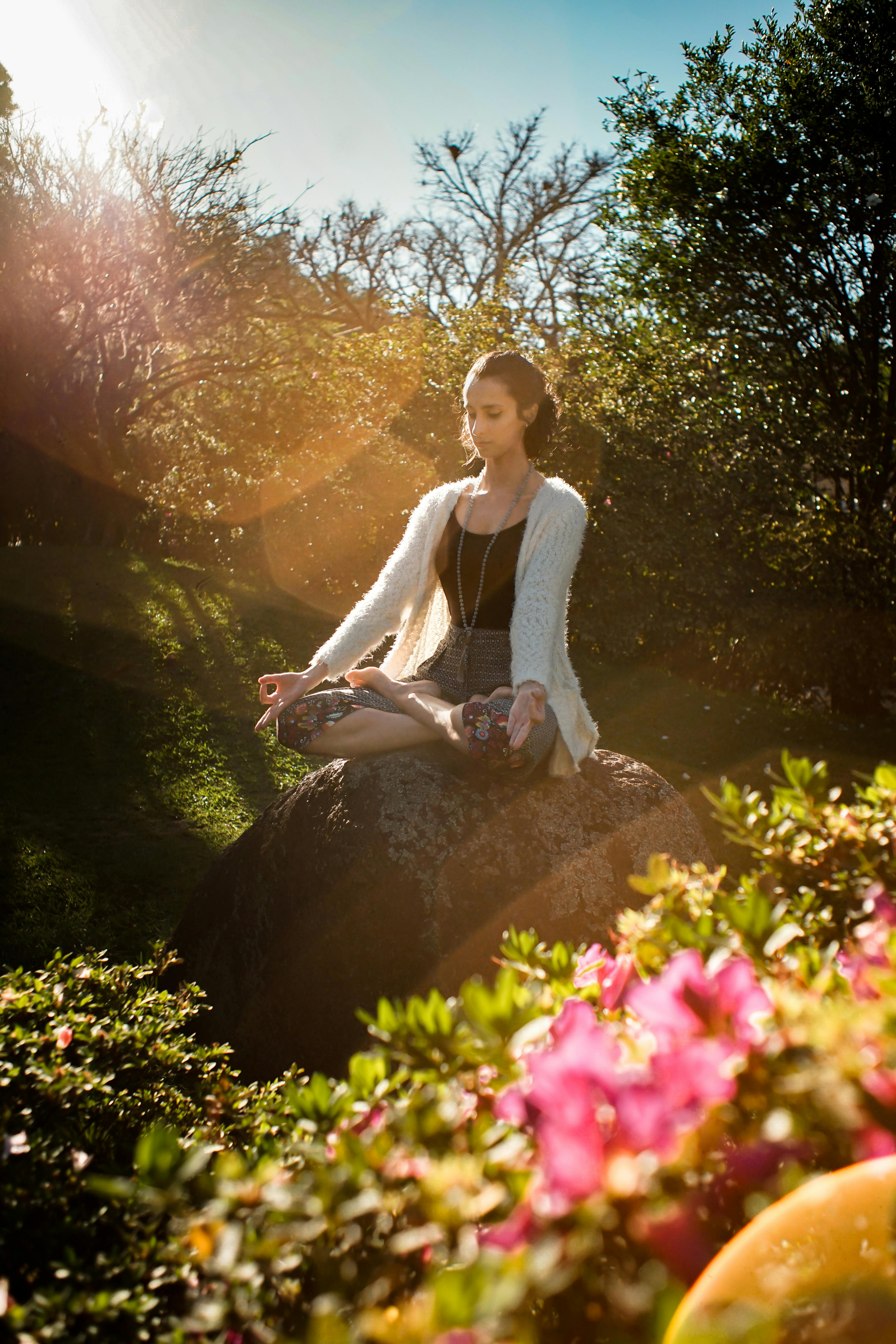Have you ever thought about starting yoga but felt unsure about where to begin?

Understanding the Basics of Yoga
Yoga is an ancient practice that blends physical postures, breathing techniques, and meditation. It encourages a mind-body connection that can lead to improved physical health, mental clarity, and emotional stability. As you venture into this transformative journey, grasping the basics will set a strong foundation for your practice.
What is Yoga?
Yoga originates from the Sanskrit word “Yuj,” meaning to unite or join. It symbolizes the union of body, mind, and spirit. Through various poses or “asanas,” breath control (“pranayama”), and meditation, you can cultivate awareness and bring harmony into your life.
Different Types of Yoga
You may be surprised to learn that there are many different styles of yoga. Each one has unique focuses, methods, and outcomes. Here’s a quick breakdown of some popular types:
| Style | Description |
|---|---|
| Hatha Yoga | A gentle introduction to yoga, focusing on basic postures and breathing. |
| Vinyasa Yoga | Involves a sequence of poses synchronized with breath, often more dynamic and flowing. |
| Ashtanga Yoga | A rigorous style that follows a set sequence of poses, great for those who want a challenge. |
| Iyengar Yoga | Focuses on alignment and precise movements, often using props for support. |
| Bikram Yoga | A sequence of 26 postures practiced in a heated room, aiming to improve flexibility and strength. |
| Restorative Yoga | Emphasizes relaxation, using props to support the body in restful poses. |
Understanding these styles can help you decide which one aligns best with your personal goals and preferences.
Preparing for Your First Class
Taking the first step into a yoga studio can feel intimidating, but preparation can ease those nerves. Here are some tips to help you get ready for your initial class.
What to Wear
Comfort is key when choosing your outfit for yoga. Opt for breathable, stretchy materials that allow you to move without restriction. It’s typically best to avoid very loose or baggy clothing, as it can interfere with your movements and inversions.
What to Bring
For your first class, here’s a checklist of essential items to bring along:
- Yoga Mat: Many studios provide mats, but having your own can make you feel more comfortable.
- Water Bottle: Staying hydrated is crucial, especially if you’re practicing in a heated environment.
- Towel: Particularly useful if you tend to sweat during your practice or if you’re taking a hot yoga class.
- Block or Strap: If you have your own props, bringing these can be beneficial, especially for support in poses.
Arriving Early
Giving yourself enough time before the class starts can tremendously ease your experience. Arriving 10-15 minutes early allows you to settle in, find your space, and even chat with the instructor if needed.
Finding the Right Class
With various options available, finding the right class that mirrors your experience and comfort level is vital for growth.
Beginner Classes
Most studios offer classes specifically designed for beginners. These classes introduce fundamental concepts and postures, allowing you to learn the basics without feeling overwhelmed.
Trial Classes
Consider taking advantage of trial classes offered by many studios. These short-term passes can give you a taste of different instructors and styles without a long-term commitment.
Observing Other Practices
If you’re unsure about a class, attending a session as an observer can be helpful. Watching others can give you a sense of the environment and what to expect, easing any worries you may have.
Building Your Practice
Once you’ve gotten a taste of yoga, the journey doesn’t stop at the mat! Here are some ways to build upon your practice.
Setting a Routine
Creating a consistent practice schedule helps deepen your experience and keep you committed. This doesn’t mean sacrificing hours every day; even 15-30 minutes a few times a week can yield great benefits.
Mixing It Up
Even as you establish a routine, mixing different styles and classes can keep your practice exciting and help you discover new aspects of your capability. A well-rounded approach can also aid in preventing boredom and burnout.
Incorporating Mindfulness
Yoga isn’t just about physical poses; it’s also about mental focus and mindfulness. During your practice, try paying close attention to your breath and body sensations. This awareness can enhance the benefits of yoga significantly.

Understanding Breathing Techniques
Breath is a crucial component of yoga, often guiding your movements and transitions. Proper breathing can elevate your practice and create a deeper connection.
Diaphragmatic Breathing
Also known as belly breathing, diaphragmatic breathing encourages deeper breaths, filling your lungs entirely. Here’s how to practice it:
- Sit or lie comfortably, placing one hand on your belly and the other on your chest.
- Inhale deeply through your nose, allowing your belly to rise more than your chest.
- Exhale through your mouth, feeling your belly fall.
Ujjayi Breath
This technique, often utilized in Vinyasa and Ashtanga practices, adds a slight constriction in the throat, producing a soft sound with each breath. It’s often described as “ocean breathing.”
- Inhale deeply through your nose.
- Slightly constrict the back of your throat as you exhale.
- Ensure the breath remains even and controlled.
Listening to Your Body
While yoga encourages pushing your limits, tuning into your body’s signals is paramount.
Recognizing Your Limits
As a beginner, you may feel tempted to overdo it to keep up with seasoned practitioners. It’s essential to respect your body’s limitations. Practice self-compassion and embrace where you are at this moment—not everyone’s journey looks the same.
Modifications and Props
Don’t hesitate to use props such as blocks, straps, or blankets to assist you. They can enhance your comfort and stability, making it easier to achieve proper alignment.
| Prop | Purpose |
|---|---|
| Yoga Block | Helps achieve correct alignment and stability in poses. |
| Strap | Assists in reaching limbs or deepening stretches. |
| Blanket | Provides support and comfort in seated or restorative poses. |

Cultivating a Positive Mindset
Yoga is as much about the mind as it is about the body. Developing a positive and open mindset can enhance your overall experience.
Embracing the Journey
Remember, yoga is a journey, not a destination. Celebrate small successes rather than focusing on achieving complex poses. Acknowledging progress, no matter how minor, can help you develop a more profound appreciation for your practice.
Practicing Gratitude
Taking a moment at the beginning or end of your practice to express gratitude can foster positivity. Consider thinking about three things you’re thankful for; it sets an uplifting tone for your session.
Engaging with the Yoga Community
Sometimes, the most enriching aspects of yoga come from connection and community.
Finding a Class Buddy
Having someone to practice with can make the experience more enjoyable and motivating. A buddy can help keep you accountable and serve as a source of encouragement.
Participating in Workshops
Many studios offer workshops focusing on specific aspects of yoga such as alignment, philosophy, or advanced techniques. These can deepen your knowledge and skills in a supportive environment.
Online Communities
With the rise of social media and online platforms, discovering virtual yoga communities has never been easier! Engaging in discussions, sharing experiences, or even doing classes together can enhance your practice.

Keeping Safety a Priority
While yoga is generally a safe discipline, ensuring your safety should always come first.
Warm-Up Before Class
Warming up is essential, especially for beginners. Participate in light stretching or gentle movements before delving into challenging poses, reducing the risk of injury.
Knowing When to Step Back
If you ever feel significant pain or discomfort during a yoga pose, stop and modify your approach. Understanding the difference between pushing through discomfort and ignoring pain can safeguard your health.
Communicating with Your Instructor
Don’t hesitate to let your instructor know about any injuries, limitations, or concerns. A good instructor will appreciate the information and can provide tailored modifications to keep you safe.
Embracing Your Unique Journey
Each individual’s yoga journey is unique and deeply personal. Learning to embrace your differences can help you thrive in your practice.
Setting Realistic Goals
As you grow, setting realistic and achievable goals can guide your practice. Think about what you want to accomplish in your yoga journey, whether improving your flexibility, strength, or mindfulness.
Journaling Your Progress
Consider keeping a yoga journal to document your journey, thoughts, and experiences. Reflecting on your practice can illuminate progress that might otherwise go unnoticed.

Conclusion: Starting Your Yoga Journey
Beginning your yoga journey can be an exhilarating and transformative experience. By understanding the basics, preparing for your first class, and recognizing the importance of safety and mindfulness, you can create a solid foundation for a fulfilling practice.
Always remember, this is your journey, so take things at your own pace. By staying open, being patient, and embracing the process, you’ll soon find that yoga offers more than just physical benefits; it enriches your entire being.




